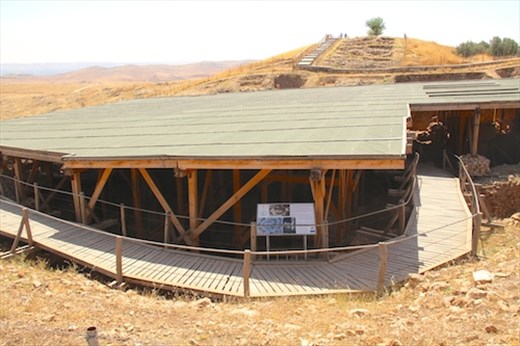WHICH CAME FIRST, THE TEMPLE OR THE TOWN? Archeologists generally agreed that the cultivation of crops and domestication of livestock led to the development of towns. Other traits that they identified with “civilization,” like the construction of temples and sanctuaries, followed.

T-shpaed pillar
But the discovery of Gobekli Tepe or “Potbelly Hill,” by Klaus Schmidt in 1995 turned archeology on its head. The massive stones carved and placed by prehistoric people who hadn’t yet developed pottery date from 10,000 BC. That’s 6000 years older than Stonehenge, older even than Hagar Qim, Mnajdra and Tarxien in Malta. There are more than 200 pillars, some 16 feet high and weighing in at ten tons, fitted into sockets in the bedrock. They are arranged in circles. Many are T-shaped and have intricately carved figures of birds, antelope and wild boar.

Wild boar
There are no signs of dwellings in the area, leading Schmidt to declare Gobekli Tepe the first sanctuaries devoted to the gods. He deduced that the skill and cooperation needed to build such a sanctuary enabled the people to build towns and villages. And as the discoverer, it’s his word that counts! But wait! Topographic scans of the surrounding area indicate the presence of other structures that may be 14,000 to 15,000 years old. So all you Indiana Jones wannabees can pack your picks and shovels and head for Sanliurfa in southern Anatolia. Who knows what you’ll discover.

Maybe even older
Gobekli Tepe is awaiting designation as a World Heritage site. Currently it is protected by a makeshift structure of large timbers and green asphalt roofing material but someday, we hope, it will have a modern dome to protect it and elevated walkways around the carved pillars and the nearby discoveries.

It ain't much now, but just you wait